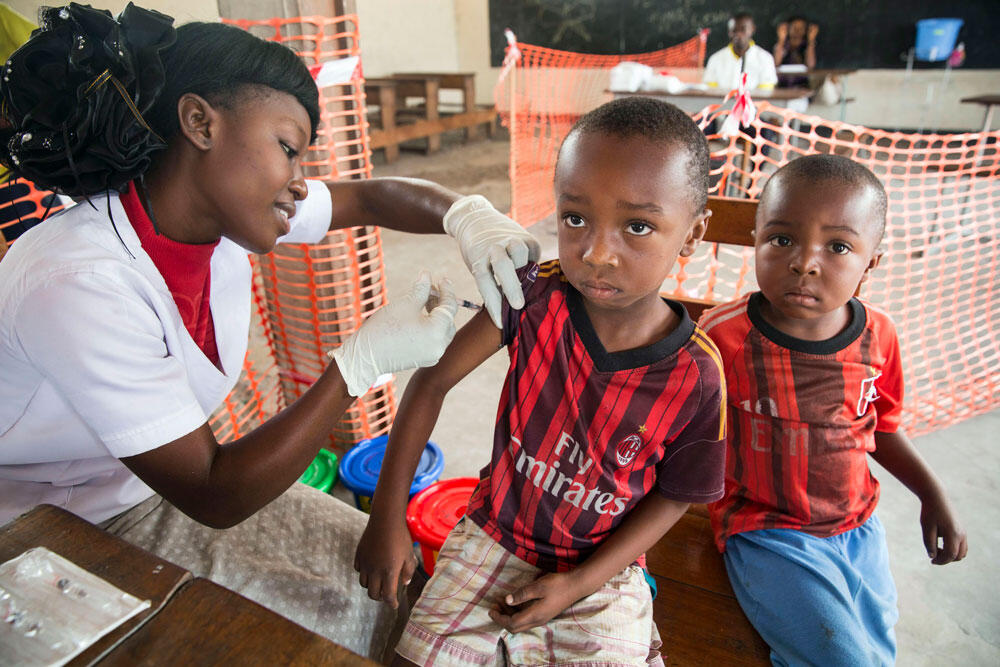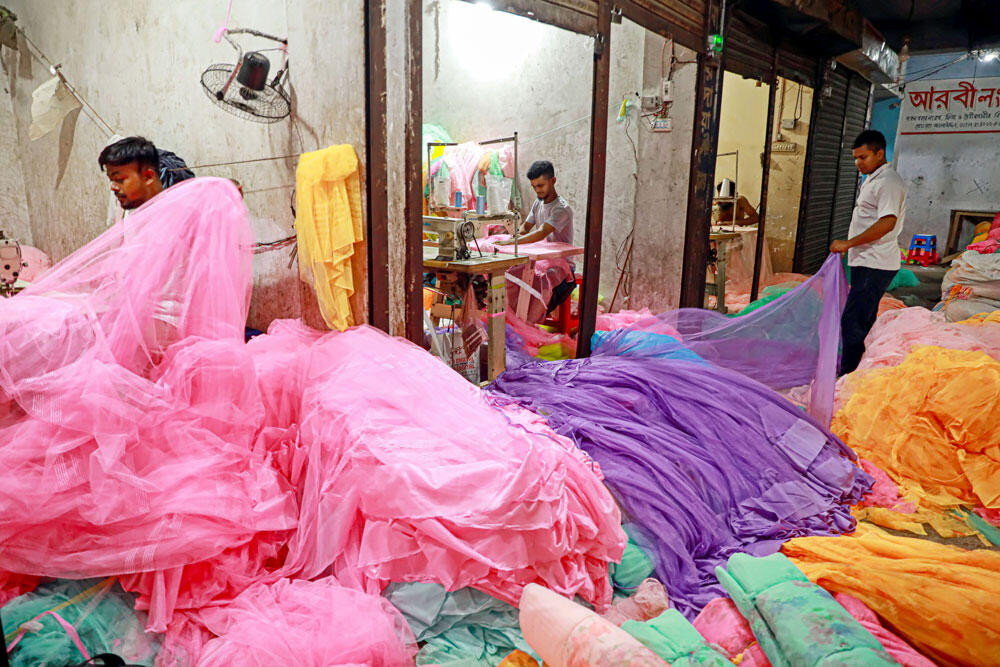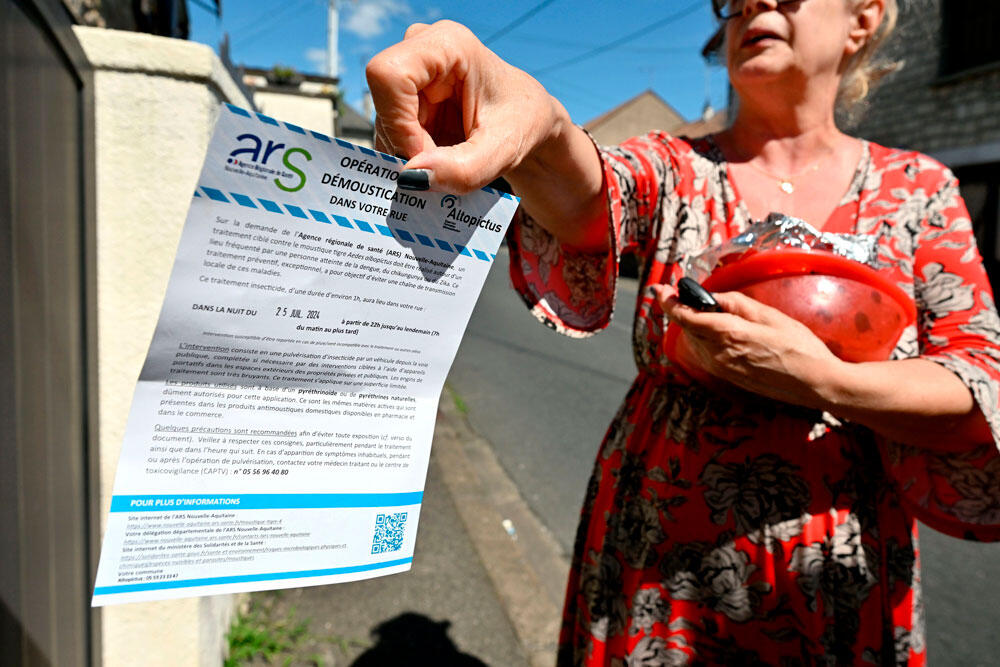You are here
Mosquitoes and their costly sting

What flies, is black and white, and ruins our summer nights by drinking up our blood? The tiger mosquito, of course. Both Aedes albopictus–its scientific name–and the closely related Aedes aegypti have a distinctive black and white pigmentation. But that is not their only common feature, for both are also invasive species. What is more, these mosquitos are specific vectors for sadly familiar diseases such as dengue, Zika, and chikungunya. This combination of factors was of special interest to the CNRS scientists who released a publication, backed by figures, confirming the impact of these two pests on the global economy.
There are 3,500 species of mosquitoes in the world, and it should be said that the vast majority are not at all attracted by humans. While we willingly believe the opposite, they play essential roles within their respective ecosystems. “They serve as food for the first links in the food chain, which is to say insectivores. This is true in both the larval stage, when they are eaten by numerous aquatic invertebrates or small fish, and during the adult stage, when numerous animals delightfully devour them,” explains the entomologist Frédéric Simard, who is the Director of the Infectious Diseases: Ecology, Genetics, Evolution and Control Laboratory (Mivegec)1 in Montpellier, as well as the co-author of the study published in the journal Science of The Total Environment.2 Moreover, in some specific contexts, both male and female mosquitoes serve as pollinators.



“In addition, during the larval stage, mosquitoes degrade organic matter in water, thereby contributing to the nitrogen cycle. Without this first level of degradation, bacteria cannot function, with a resulting eutrophication of the environment, like rotting water puddles,” Simard points out. Mosquitoes are vectors of infectious agents that cause diseases among numerous vertebrates. They help regulate ecosystems, notably by transmitting diseases to apex predators, humans in particular. The overall services provided by mosquitoes are difficult to quantify, as opposed to the direct and indirect damage caused by Aedes albopictus and Aedes aegypti, which amounts to 100 billion dollars over forty years.
Uninvited vectors
“We were interested in these two species firstly because we were studying invasive species, and it turns out that A. aegypti and A. albopictus are two species of invasive mosquitoes. A. aegypti comes from Africa, and was spread by humans, notably during triangular trade. It is a mosquito that does not easily settle in temperate zones, as it is incapable of entering diapause, and does not survive the winter. Unlike A. albopictus, which is from Asia, and whose eggs survive from one season to another.” The latter’s eradication began in the 1980s, and was especially connected to the trade in tyres—a favourite lair for mosquitoes—from Asia towards the United States.

Initially interested by the economic costs caused by invasive species, the scientists quickly realised that these two mosquito species “were first among all reported costs, all organisms combined.”
By reporting, strictly speaking, the data available in the scientific literature and conducting a major deduplication effort, the scientists were able to estimate, for the period between 1975 and 2020, that these two mosquitoes were responsible for more than 95 billion dollars of spending globally. “This figure represents the sum of expenses effectively reported for the period. It is a minimum, knowing that many countries do not publish statistics, and that all cost types are not documented exhaustively everywhere.”
In reality, the mosquitoes here are just vectors–deadly cargo planes of sorts–for the virus responsible for Zika, chikungunya, and dengue, three diseases that have caused devastation across all latitudes for a number of decades.
A deadly and incapacitating trio
The costs connected to these three diseases are highly dependent on the symptoms they cause. “With dengue, infections are asymptomatic most of the time. In 10-20% of cases, the disease requires treatment, which can quickly prove fairly heavy. Either the treatment is provided, thereby generating costs, or it is not, and the persons affected die, which cuts costs,” says Simard, morbidly ironic. With regard to chikungunya, the impact on individuals is different. Most of the time, the symptoms involve paralysis that has long-term consequences. “We are talking about multiple years in which people are partially or totally incapacitated.” The costs are spread over longer periods of time, and are essentially borne by households, or by employers in the form of absences, for example.

For Zika, it’s also different. “It is the disease that costs the most. Zika is dangerous for the infected person, and all the more so if this person is a pregnant woman. There is a high risk that the child will be born with microcephaly, a serious disease that requires extensive care throughout the individual’s life, in other words 30-40 years.”
While the total costs connected to the activity of these two mosquito species does not seem huge on a global scale, it is important to keep in mind that the study focuses on just two species. If all of the real costs were calculated, there is no doubt that the 95 billion dollars would easily be surpassed. In addition, the current trend is toward an increase, and an exponential one at that. “We see no signs that we have reached a ceiling,” Simard explains. “It is increasing because the costs are not correctly reported everywhere, as well as for a biological reason: there are more and more mosquitoes, and hence more and more possibilities for transmission of the virus.”
At a time of unbridled globalisation, mosquitoes use the same circulation routes as humans, and can travel as quickly as we do. The same is true of the viruses that travel with individuals. “Today humans have become superpropagators. People infected by dengue, for example, carry the virus for ten days. During this time, if an Aedes mosquito bites them, it becomes infected and can transmit the virus. Each year thousands of cases of dengue are imported into France, and we now see local (native) transmission episodes for dengue every year. These diseases must henceforth be declared, and require the implementation of a monitoring protocol (viral screening, vector control interventions), which represent so many additional costs for society.”
Better prevention for less exposure
“The majority of the costs reported in our study cover losses and damage directly tied to the diseases transmitted by the Aedes, such as the cost of treating the ill. Over the entire period, less than 10% of spending is invested in prevention, which includes research and mosquito control strategies.”
Since 2019, a decree has given Regional Health Agencies (ARS) the responsibility of managing the “tiger mosquito” problem in France. The current policy revolves around social mobilisation to prevent the arrival and spread of mosquitose, and uses insecticides only in cases of suspected viral circulation: “ARS agents spray insecticide within a 150 metre radius around the residence of the individual who contracted one of the three diseases with mandatory declaration.” The goal is to get rid of infected mosquitoes in order to cut the entire viral transmission cycle, but in reality the mosquitoes return in very little time.
Promising vaccines are under development, and new approaches for the sustainable control of mosquito vectors are gradually proving themselves in the field. The most promising techniques include the dissemination of sterile male mosquitoes, mosquitoes infected by particular communities of bacteria limiting their capacity to transmit the virus, the development of genetically modified mosquitoes, and mass trapping.

For Simard the solution is multi-faceted: “We absolutely must develop a toolbox with different and complementary approaches that are (or are not) applied depending on the entomological, epidemiological, and socioeconomic context of the territory and populations requiring protection.” It is crucial to tackle this problem in order to achieve real economies of capital and human lives.
- 1. CNRS/IRD/Université de Montpellier.
- 2. https://www.sciencedirect.com/science/article/pii/S0048969724032017















